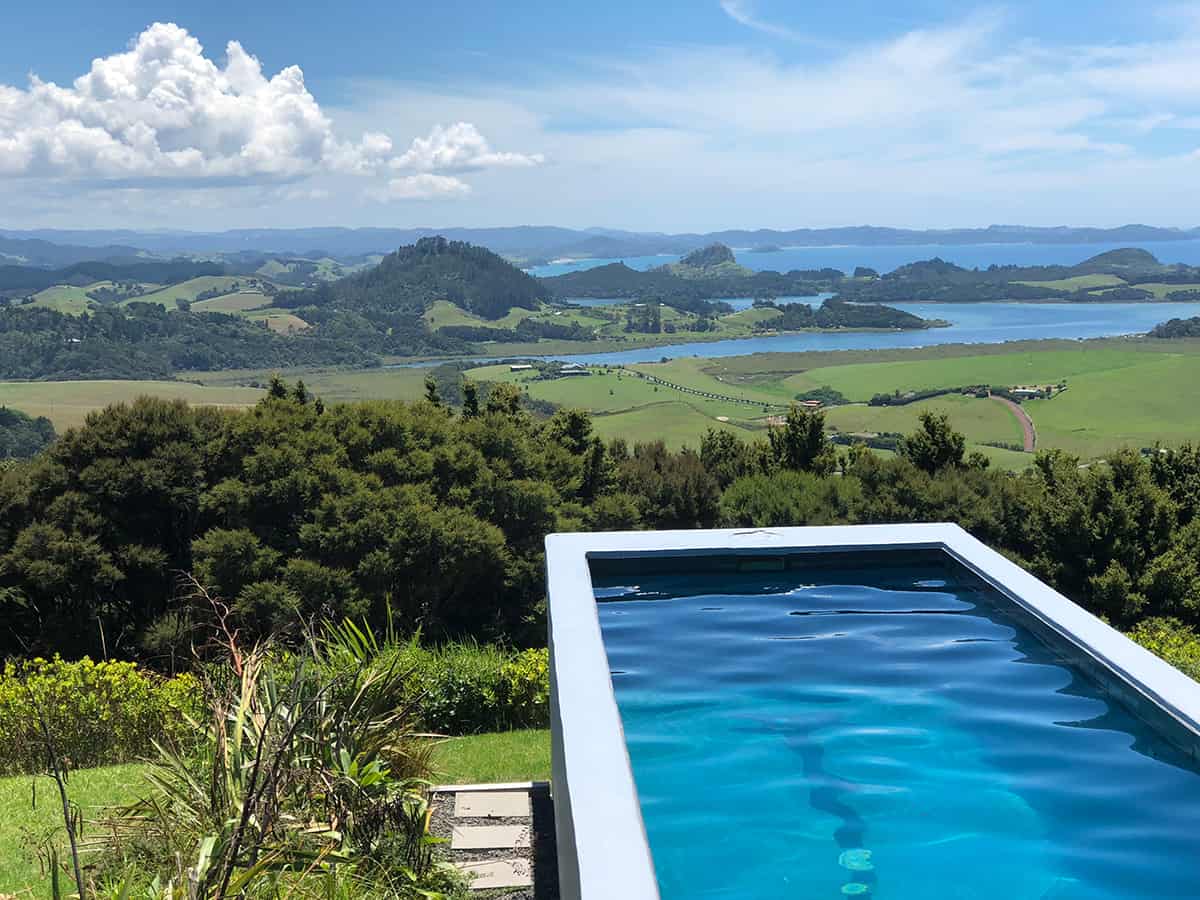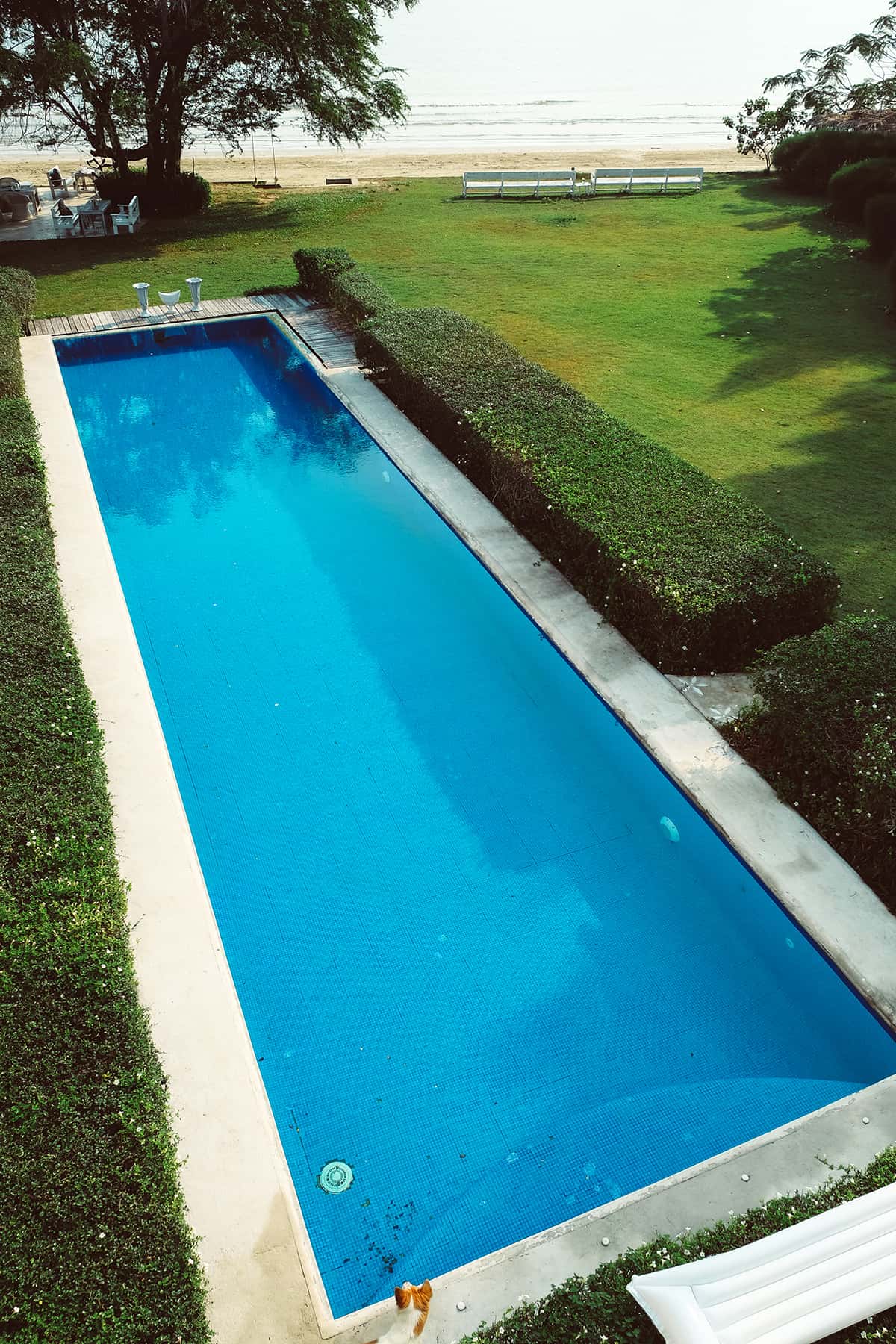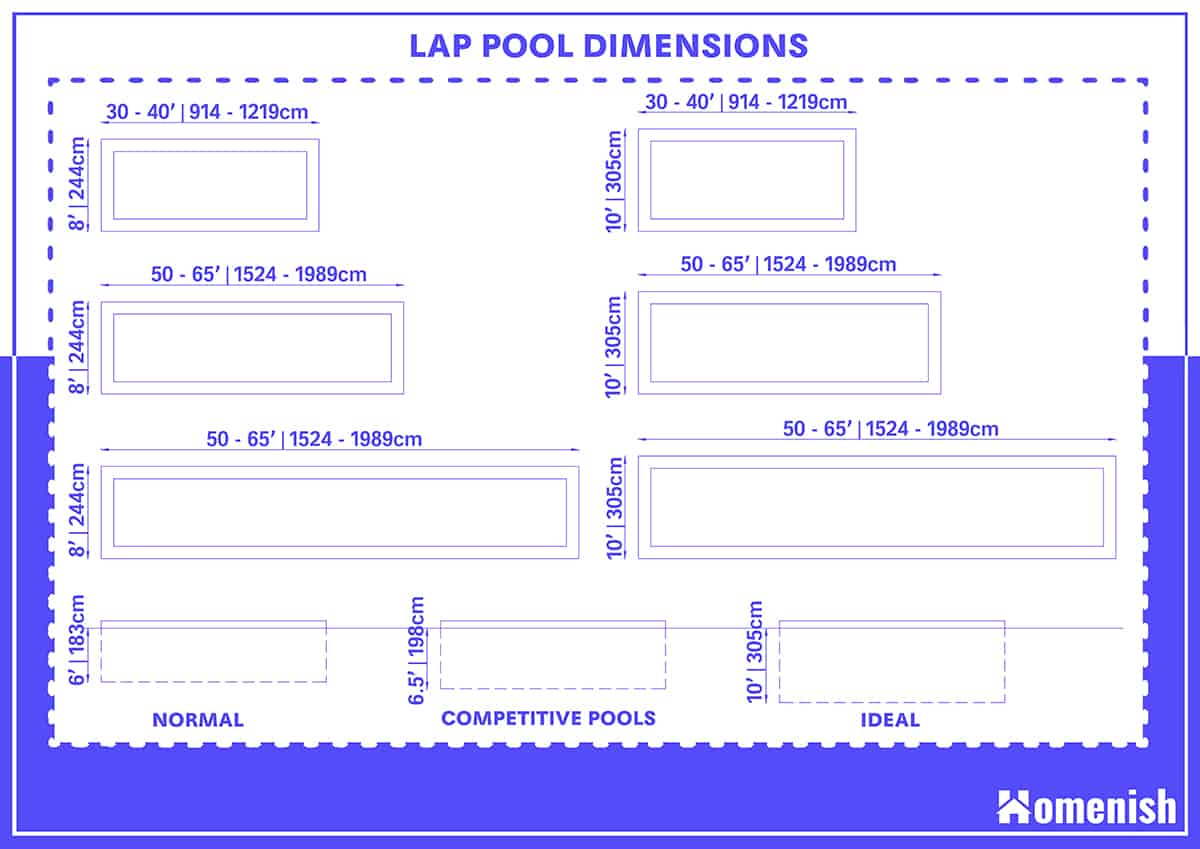Lap pools have emerged as a popular alternative to regular swimming pools, especially as people look for more ways to maximize their private gardens and introduce a greater variety of personal exercise into their routines.
If you’re interested in installing a lap pool on your property, then one of the biggest considerations will be the size you choose.
Here we look at the most common lap pool dimensions and how various lap pool sizes can affect the way you use them, as well as their affordability.
What is a Lap Pool?
A lap pool, as you might expect from the name, is a pool that is specifically designed to be used for personal exercise in the form of swimming laps. It will typically take the shape of a long and narrow rectangle, allowing the user to swim lengths without having to turn too frequently and have their stroke interrupted.
Lap pools may also be L-shaped to incorporate a step area where the user can access the pool. Lap pools are a more compact size compared to regular swimming pools, making them more achievable for people to build and enjoy on their own property. The smaller size also makes them more affordable, as they require less excavation, less building materials, and less time to install.
Another benefit of lap pools is that they require a lower volume of water to fill, which will lower maintenance costs, especially if your lap pool is heated during colder months.
Lap Pools Sizes
Lap pools do not come in standard sizes and instead can be customized to suit the shape and size of your garden. You can find prefabricated pool shells which arrive as a solid mold and can be sunk into the ground, and in this case, you will need to choose a predetermined size for your lap pool.
You can also get a modular lap pool kit which you can build in situ with panels, and again this will ordinarily come in a variety of predetermined sizes, though it may be flexible with regard to shape and dimensions. Another option is to use poured concrete to build an in-ground pool, which will allow you to completely personalize the size and shape of your lap pool.
Length
When planning the length of your lap pool, you should consider the space you have available, as well as the distance you like to swim. At a minimum, lap pools need to be around 30 to 40 feet in length, but more typically, lap pools in home gardens will measure between 50 feet and 65 feet in length. In some instances, lap pools will measure as long as 100 feet in length, though this won’t be achievable for people with average-sized plots.
The reason that lap pools should be a minimum of 30 to 40 feet long is that this measurement provides an adequate length of space to swim laps without having to turn too frequently. Frequent turning interrupts the flow of swimming and makes the exercise less enjoyable and less worthwhile.
With 30 to 40 feet of space, you can get a good rhythm going and get up to a good speed when swimming. If you want to replicate the size of a competitive swimming pool, your lap pool will need to be 82 or 164 feet long. This may be useful to prepare for competitions but is unnecessary for the purpose of simply getting a good workout.
For most swimmers, the longer the pool is, the better. Longer pools will allow the swimmer to work on endurance and speed and give them more uninterrupted stroke time without having to turn. If you have adequate space, you may want to build a lap pool at the longest length your garden will allow, but bear in mind that the longer the pool is, the more expensive it is going to be to build.
Width
You might assume that the width of a lap pool is unimportant because as long as it allows enough space for a swimmer to spread their arms in breaststroke without hitting the walls, then it will be suitable. However, this is a common misconception. The width of the pool will have an effect on the swimmer because it will alter the level of difficulty.
When a swimmer’s motions push water outwards to the sidewalls of the pool, the water rebounds backward and creates waves coming towards the swimmer. If the pool is not wide enough, then this can create quite dramatic turbulence, which can make swimming very difficult. For this reason, the width of the pool should be around eight feet to lessen the effect of the turbulence.
A lap pool with a width of eight feet can accommodate two-lane swimmers at one time, though in competitive pools, one lane will be a width of eight feet for each person. Common width sizes for lap pools are eight feet and ten feet. You don’t want to have a width much bigger than ten feet for a lap pool because it will lose its long and narrow look that defines a lap pool and become more of a general swimming pool.
Depth
The depth of a lap pool should reflect the way the swimmer intends to use it. For general lane swimming, a depth of four feet will be appropriate; this provides enough space for the swimmer to move without hitting their hands, knees, or feet on the floor.
If you want to dive into the pool, you will need a depth of at least six feet to ensure you don’t risk colliding with the floor of the pool and causing serious injury.
The deeper the pool is, the more it will cost to excavate, so to minimize costs, you can designate a diving end of the pool which is deeper than the opposite end. In competitive pools, a minimum depth of 6 and half feet is required, with the ideal depth being somewhere closer to ten feet.








